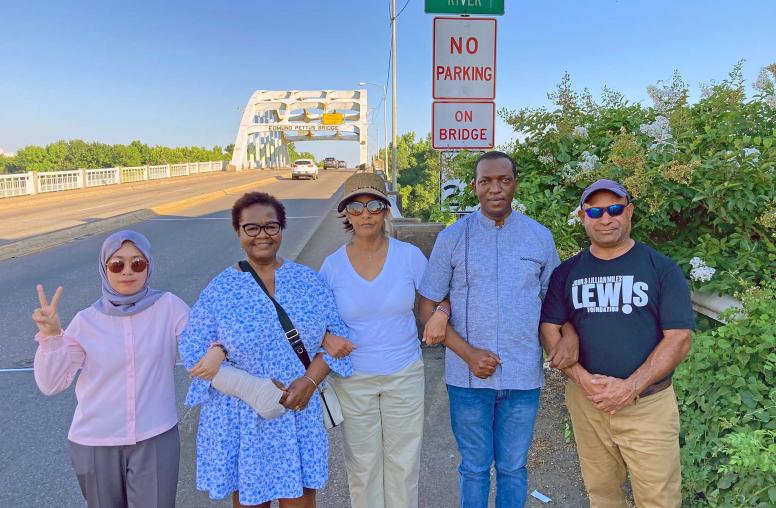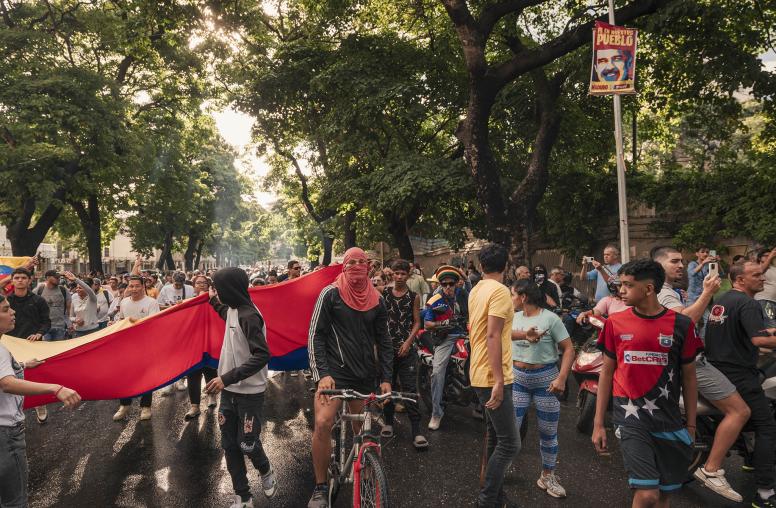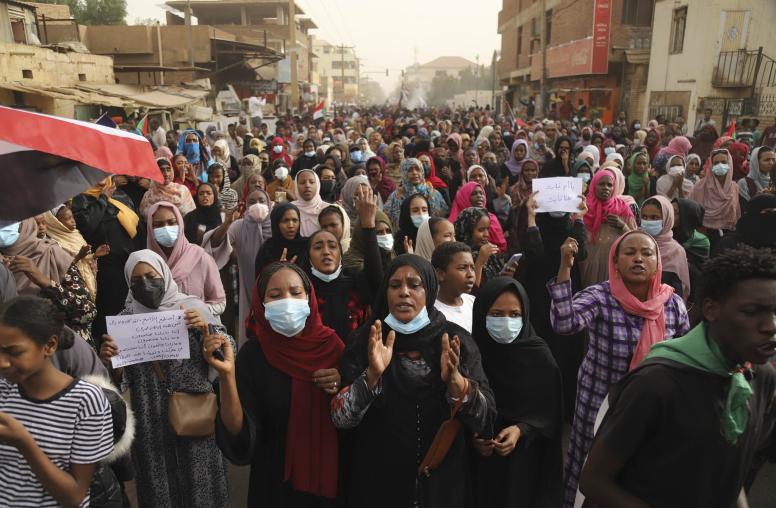World Water Day: The Role of Nonviolent Action in Water Governance
As climate change accelerates, grassroots movements aimed at improving water management will need to adapt—here’s how.
Will people go to war over water? According to the United Nations, “Water is the primary medium through which we will feel the effects of climate change” in the years ahead. As access to this finite, vital resource becomes increasingly imperiled, water-related tensions will rise — both between states and within them. In recent decades, disputes between governments and local stakeholders have resulted in mass action events centered on water governance. Today, in the age of accelerating climate change, nonviolent movements will need to adapt their strategic thinking if they are to improve water governance and prevent violent conflict.

Water Insecurities and Pathways
The connections between water resources and conflict remain a matter of scholarly debate. Historically, evidence suggests there has never been outright war over water. Still, much of the same evidence shows that water-related security concerns are likely in the years ahead and the need to prevent violence related to this critical resource will persist. This likelihood requires approaches that go beyond conventional frameworks for violent conflict prevention.
There are numerous pathways through which water-related challenges connect to peacebuilding and conflict, including through inequitable access, destruction of facilities, weaponizing water, control of the decisions over water resources or government mismanagement of water-related disasters such as contamination, floods or prolonged droughts. Water is a fundamental part of the state-society relationship, and water systems interact with root causes of tensions between the state and its citizens. Water resource allocation often reflects or helps perpetuate other tensions in social, economic and political power dynamics.
Throughout the Middle East and North Africa, water grievances mingle with urban-rural divides, suspicions against governments and increased instability, including protests. Violent clashes between tribes in southern Iraq over agricultural water have been blamed on the government’s lack of capacity — or political will — to prevent some farmers from taking the water quotas belonging to other tribes.
Corruption, displacement and conflict are interwoven with the religious, traditional and formal elements of Afghanistan’s water governance system — leading to decreasing trust, less cooperation and lower capacity for the nation to handle water stress. In urban centers of Pakistan, mafias control water resources, reflecting economic inequality and lack of capacity for enforcement of water laws.
Even in the United States, the lead-contamination of Flint’s water drew historic critiques of environmental racism. The Standing Rock “Water Protectors,” mobilized against a pipeline’s impact on water, have linkages with historic resistance over land rights.
In fragile states, where the social contract is weak or severed, nonviolent action movements can be a transformative instrument to address water issues parallel with deeper issues of conflict and fragility. Weak water governance can provide grassroots movements with powerful opportunities for mobilization that can contribute to opening civic space, advancing good governance and addressing societal inequities in resource allocation.
Mass Action Campaigns on Water
Privatization of water resources, tariffs and water construction projects (such as dams) are just a few of the many government-led water policies that have triggered civic uprisings around the globe. In 2000, thousands of Bolivians rallied to reject water privatization and rate hikes, resulting in what we now call the “Cochabamba Water War.” In Nicaragua, an anti-privatization movement active from 2001–2007 has been credited with helping to invigorate civil society activism—up until Ortega’s return to power.
In Egypt, protests around water privatization between 2007 and 2010 preceded the country’s monumental 2011 revolution. A mountainous village in Tunisia recently marked a yearlong protest against a quarry operation which contaminated the Khemir tribe’s only water source, leading to allegations of government neglect for the tribe’s legal rights and public services. For decades, South Africa has been a stage of ongoing water-related protests and riots in certain townships.
In 2012, due to a lack of public consultation and fears of pollution to drinking water and a fishery, hundreds of Chinese citizens protested a water-waste pipeline, resulting in clashes with police and extensive damage to government property. China’s geopolitical ambitions have also led to tensions with regional stakeholders. For instance, in Burma, environmental organizations came together in 2010 in a peaceful campaign that succeeded in stopping the controversial, Chinese-funded Myitsone dam project that would have caused massive environmental damage and negatively impacted the peace process. In the Mekong River Basin, China’s regional hydropower strategy has resulted in backlash from downstream communities. People in Cambodia, Laos and Thailand are grappling with and are becoming increasingly vocal about the risks of environmental disruption China’s mega-dams pose to their livelihoods.
Grassroots Movements Must Adapt as Climate Change Intensifies
Demonstrations like these could grow into broader movements, particularly as water-related challenges will intensify in lockstep with a rapidly changing climate, increasing strain on water governance systems. Water stress is projected to grow in agricultural lands of Asia, North America, Latin America and the Caribbean and in the groundwater-dependent Middle East and North Africa. Central and South Asia’s river systems will fundamentally change. Saltwater intrusion is increasingly challenging for islands and other coastal areas worldwide and is a driver of displacement. These challenges will converge with urbanization and migration trends, increasing water demand while supply decreases.
Civil society and social movements leading actions to address water-related tensions (as well as climate and environmental justice activists) should embrace nonviolent action strategies and methods, tailoring them to this type of struggle. Particularly in fragile states with low capacity to quickly respond to community unrest, leaders of grassroots movements will face existential concerns as they seek to expand their capacity to organize and mobilize. Activists leading these movements can adapt by:
- Embracing nonviolence: For these types of movements to be successful, it is critical to keep civic uprisings from devolving into violence. Nonviolent action research shows peaceful campaigns are far more likely to achieve their stated goals and be followed by peace and democracy. As these community-level efforts continue to grow and oppose water governance policies of their leaders, nonviolent discipline could be a determining factor for their potential success. Grassroots movements with the skills and tools to refrain from violence are less likely to become the targets of violent state repression.
- Being strategic: Local civil society and environmental activism platforms could benefit from developing the strategic thinking necessary to sequence and sustain effective nonviolent campaigns in the decades to come. This entails transferring and localizing the tools and skills necessary to enhance the capacity of these platforms for channeling people power.
- Identifying and peacefully engaging with the responsible actors: Wherever possible, traditional activism platforms should continue focusing on identifiable actors responsible for their grievances (i.e. the government, private sector or other water users). Admittedly, this won’t be easy for climate justice movements, since they must grapple with the challenge of “diffuse responsibility” — meaning no single government or other actor is to blame for climate change, making it harder to identify targets for action.
- Articulating local grievances: In the context of state fragility, activists will have to reckon with how to articulate localized grievances. Moreover, it will be up to them to channel these rising tensions and help organize future struggles to demand good governance in the water sector. This will require combining nonviolent action with other critical tools, like negotiation and dialogue to build consensus.
Ultimately, a holistic environmental peacebuilding lens is needed — one that is calibrated with a deep understanding of the linkages between social contracts, water, peace and conflict. Addressing today’s challenges and adapting to the risks of tomorrow require conflict prevention efforts not only through technical or state-integrated water resource management, but also through empowering local leaders to use nonviolent action for peacefully channeling their struggles around this essential resource.
Jill Baggerman is a research analyst for Learning, Evaluation and Research at USIP. Emmanuel Davalillo Hidalgo is a senior regional specialist for Latin America at the Institute.


